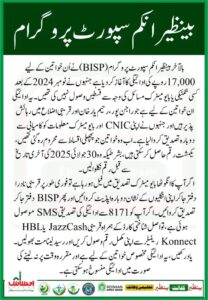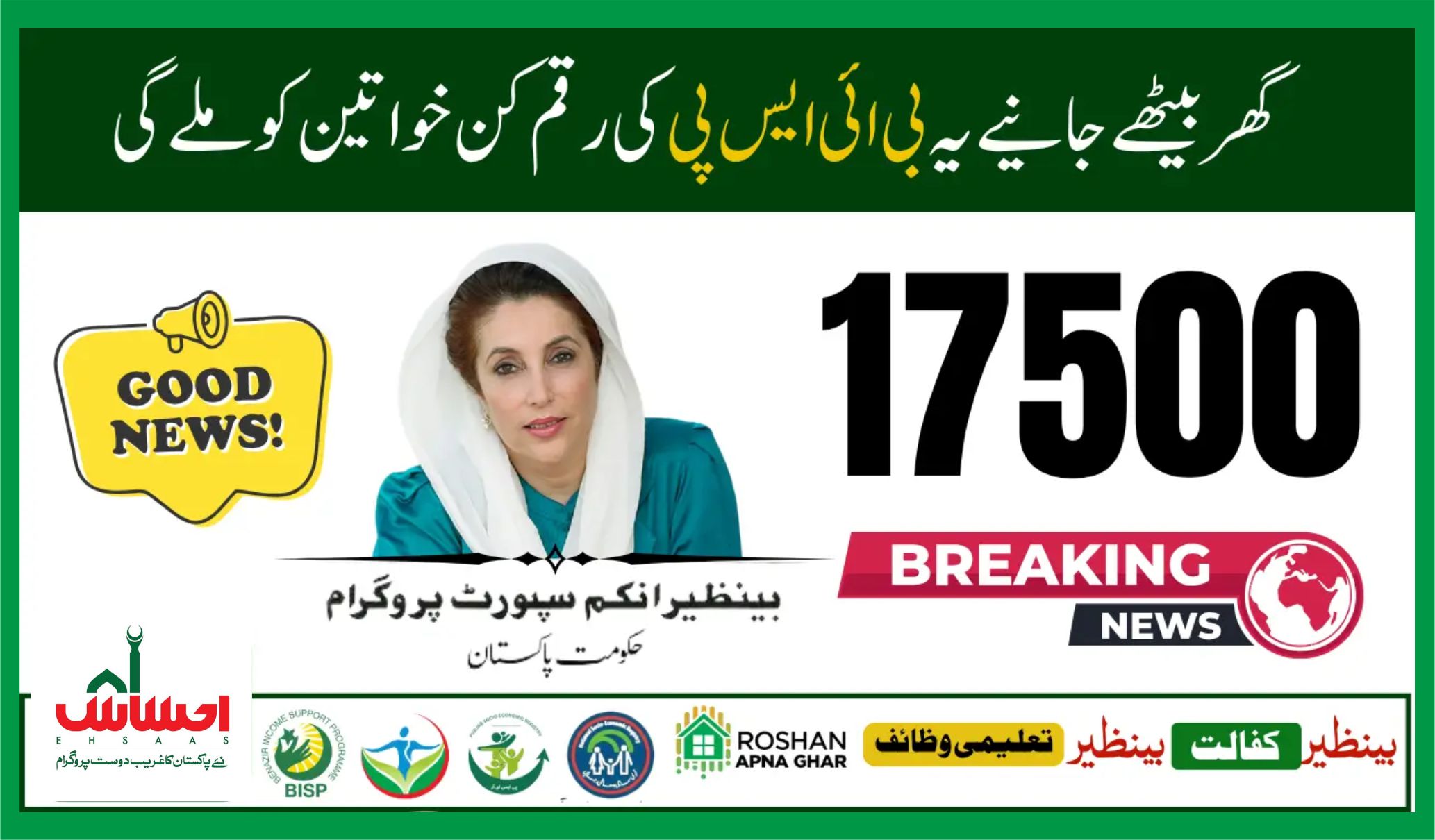The BISP has officially initiated the 17000 installment under the Ehsaas Program, marking a major milestone for poor women and registered families across selected districts. Individuals who have undergone eligibility check via NADRA and CNIC verification are now eligible to collect this payment release. Beneficiaries often receive an SMS service confirmation once their funds are approved.
Contents
BISP 17000 Payment Begins in Selected Districts Withdraw Your Amount Before Deadline
As someone who has observed these distributions firsthand, I’ve noticed the calm but hopeful atmosphere at BISP Tehsil Offices and payment centers. Women clutch their national ID and wait patiently for biometric verification. It’s clear how important this income support is: it alleviates daily financial strain and uplifts entire households. Around May 2025, the first wave of distributions was rolled out underscoring the government’s commitment to poverty alleviation through timely support.
8171 BISP New Installment Update New Survey Phase 2 Started
BISP New Installment
This new installment, worth 17000, follows a payment schedule strategically devised to reach eligible women who previously may have missed out. The SMS check via 8171 and CNIC check at the BISP Tehsil Office remain core tools for verifying inclusion. Once notified, recipients proceed to the nearest cash centers for disbursement, often assisted by staff to ensure verification process integrity.
In my experience assisting at local cash collection points, I’ve seen how the clarity of the distribution plan avoids confusion. Families know exactly when and where to go, and the presence of digital payment infrastructure in many locations speeds up the process. Clear guidance about withdrawal deadlines also helps avoid last-minute rushes, ensuring the safety and efficiency of the campaign.
BISP 27000 Payment for Women
Women who missed previous payouts are now eligible for the 27000 installment a double payment that encompasses both the current and past dues. This announcement, shared via official channels and SMS service, has generated excitement among the poor women waiting at beneficiaries’ local payment centers. The rationale is simple: BISP doesn’t want anyone left behind.
From my time visiting various towns, I’ve spoken with women holding both their CNIC and a printed SMS; the joy and relief they express is palpable. The emergency cash injection helps cover food, healthcare, and schooling costs, especially when coupled with previous income support initiatives. Many beneficiaries also report that the announcement included detailed instructions for eligibility check through registered women lists and SMS confirmation.

BISP 17000 Related Updates
In recent weeks, the Prime Minister Shehbaz Sharif–led administration has emphasized inflation relief, releasing relief fund packages worth 17000 and 27000 to strengthen poor families. These funds include both one-time disbursements and regular financial aid, designed to cushion households from rising prices.
Drawing on my own observations, I noticed how the presence of digital payment systems even in semi-urban areas has reduced reliance on outdated cash methods. Now, the transfer of cash distribution is smoother, more transparent, and traceable. The government’s push for digital payment alongside traditional cash centers increases efficiency and accountability while supporting the broader mission of poverty alleviation.
BISP Payment Released
Once the official notice confirms the payment release, beneficiaries with their national ID and verified CNIC head to payment centers. Verification process includes fingerprint scans at both disbursement centers and cash centers. Regions such as Rahim Yar Khan have seen punctual distribution, provided families meet all criteria before the withdrawal deadline.
During my visits, I observed effective coordination: at disbursement centers, staff manage queues, verify CNICs, and watch the biometric process—all within a respectful environment. This ensures women receive their funds promptly and securely. The seamless integration of SMS confirmation further reassures recipients that the official process is reliable.
Payment Starts from 13 May 2025
On 13 May 2025, the BISP rolled out a new payment window for women beneficiaries, following the completion of the verification process. Receiving an SMS confirmation, local residents lined up at disbursement centers, CNIC in hand, to collect their 17000. The presence of biometric verification and CNIC checks ensured eligibility and minimized fraud.
From what I witnessed, the systematic approach—early announcements, verification reminders, and staff guidance—made the process smooth. Even senior women were able to navigate the system confidently, a testament to the user-friendly setup and inclusive design of the distribution strategy.
Payment in Rahim Yar Khan
In Rahim Yar Khan, monthly distributions kicked off on the scheduled date. Local cash collection centers were busy as eligible recipients arrived ahead of the withdrawal deadline. Here, the BISP focused on ensuring women had no difficulty showing CNIC, completing biometric checks, and receiving their payment.
Benazir Nashonuma Program 2025 To Provide Health And Aid For Mothers And Children
During my field visit, one beneficiary shared, “It feels like the government is noticing us—finally.” The atmosphere was respectful and orderly; women left short lines feeling relieved, with funds that mattered deeply to families living on subsistence. Community organizers also helped track beneficiaries’ payment status and offered guidance for follow-up.
Government Initiative and Long-Term Impact
Overall, the extended BISP disbursements whether 17000 or 27000 highlight the government’s ongoing commitment to financial aid, inflation relief, and poverty alleviation. Strategic integration of digital payment, biometric verification, and disbursement centers has optimized transparency and minimized fraud. The repeated support underscores how emergency cash and consistent income support form part of a long-term framework to empower women and stabilize low-income families.
From my perspective, these programs go beyond immediate relief: they encourage women’s financial independence, enhance community confidence in public services, and lay groundwork for further development. And while challenges remain such as reaching the remotest areas or ensuring consistent SMS updates the system is progressively becoming more resilient.
